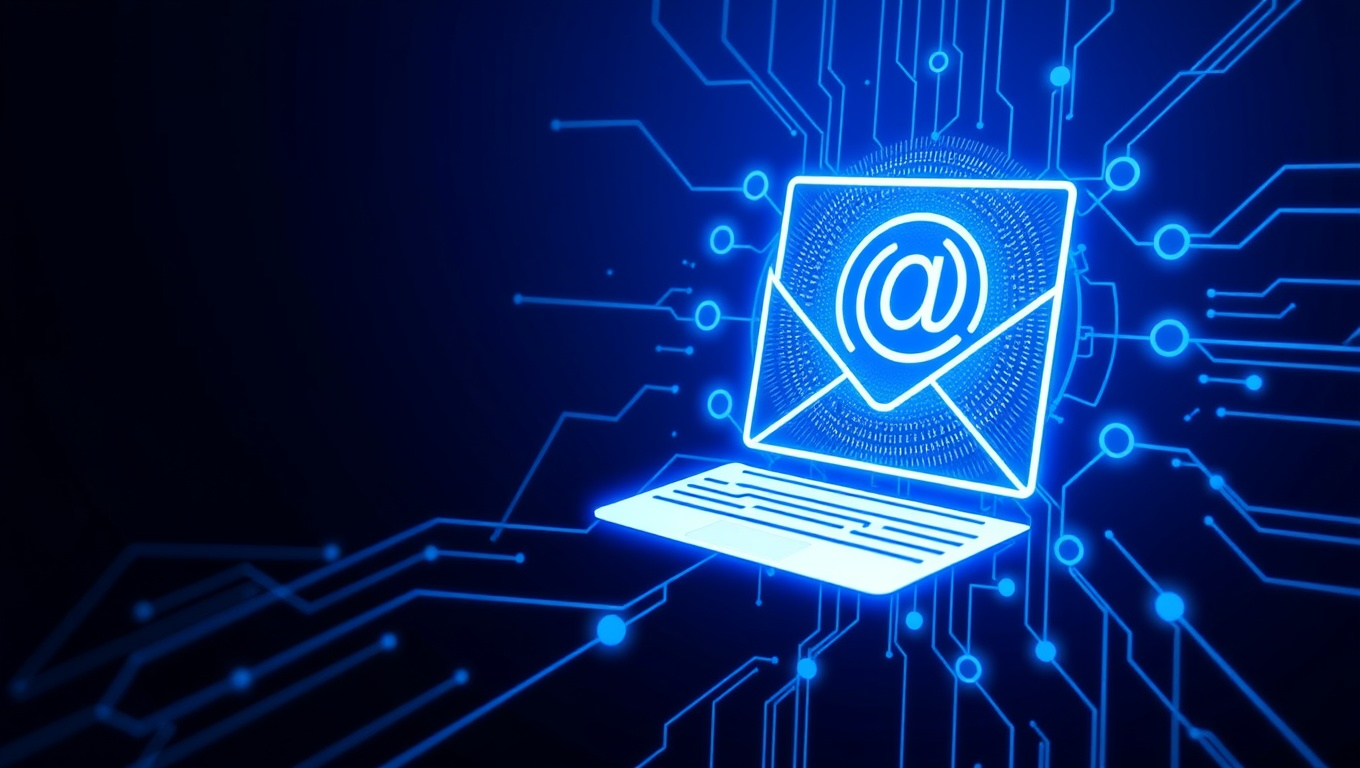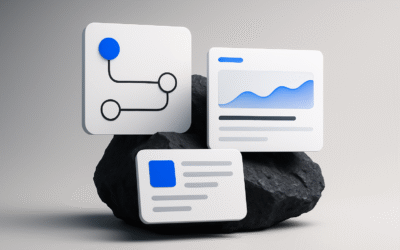There’s a worn-out checklist for cold email outreach. Plug in a [first name], toss in a job title, mention a company win from last quarter, and ship it to hundreds or thousands of prospects.
It’s supposed to feel personal. But it doesn’t. Your sales team might be spending hours tweaking subject lines and agonizing over which cold email template to use, but the results don’t match the grind.
The thing is that cold emailing is supposed to be a numbers game. But when every message sounds like it was written by someone who learned about you five seconds ago, nobody feels seen.
I’ve sent (and ignored) my fair share of these emails. They rarely get real replies. Not because the product sucks, or the pitch is wrong. The problem is mass emails always feel like mass emails.
So, can you actually personalize cold emails at scale, or is that just a fancy pitch for the latest AI tool?
Why “Personalization” Is So Broken in Cold Email
Truth is, “personalization” doesn’t mean what most sales teams think it does.
Adding {{first_name}} or saying, “Saw your recent promotion,” isn’t personalization.
It’s a formula. Prospects know it. You know it.
This superficial personalization just ticks a box, trying to trick the reader into thinking you did your homework. But when you receive one of these, your gut knows within three seconds: this was sent to a list.
Real personalization feels different. It lands because it shows understanding, a sense the sender actually spent time, not just scraping LinkedIn for easy wins.
The catch? Doing that level of personalization across hundreds or thousands of prospects is near impossible without burning out your entire sales team. Maybe you can send a handful of hyper-personalized emails each day, but you can’t scale using manual research and customization.
This is where people get sucked into the AI hype.
AI in Sales: Hype vs. Reality
Lately, AI-powered personalization is everywhere. Tools promising to write sales emails that feel personal at scale. I’ve spent a lot of time inside these platforms. They’re better than what came before, but most of what’s sold as “AI personalization” isn’t really personalization; it’s fast pattern-matching.
AI can instantly pull a prospect’s recent LinkedIn post, slide in a reference to their pain point, and mash together an email that sort of sounds relevant. But most AI-generated cold emails still have that hollow ring: “Loved your thoughts on building culture at [company]. Any interest in a quick call?”
It shaves hours off your prep. But if all you do is speed up a soulless process, you still get soulless results. Prospects get bombarded with “personalized” emails, yet their reply rates don’t jump. Why? Because it’s clear the sender never actually cared.
But AI isn’t useless. You just have to use it differently, and with more thought.
Leveraging AI for Real Personalization
Get good enough at using tools like Clay, Smartlead, or Instantly, and you can make your emails feel way more personal, even when sending at scale. But you have to set things up to make the most of AI’s strengths and get around its weaknesses.
Here’s what’s worked for me and the teams I’ve helped build:
– Start with a better list. The best cold email platform or AI tool can’t do much if your prospect list is junk. If your sequences start with the wrong audience, no amount of personalization will bail you out.
– Segment deeper than job title or industry. AI makes it possible to slice your prospect list based on shared pain points, goals, tools used, or recent changes (like a big funding round). Sending tailored emails (even if it’s just for small groups) beats trying to make one email work for everyone.
– Pull real context, not just data points. Instead of just referencing “Saw you raised Series A,” dig deeper. Use AI to summarize a podcast they went on or comment on the actual content of their posts. This is where AI can actually save you hours. The reply rate jumps when someone sees you referenced something meaningful.
– Draft, then humanize. Use AI to generate the skeleton of your personalized cold emails at scale. Then have your sales team do a gut check or personal edit—especially on the openers. Automation gets you 80% there, but it’s the last 20% that makes your cold outreach feel genuine.
AI can transform your personalization efforts, but only if you guide it with clear research and make your outreach feel like you know who you’re talking to.
Psychological Hooks That Make Emails Feel Human
There’s a reason most cold emails still fall flat, even when the data points look right. It’s not what you reference, it’s how it lands. CEOs have developed a sixth sense for canned pitches. They don’t just skim for relevance; they scan for intent. Was this written for me, or was I just the next record in a CSV?
To make your emails feel like they came from a real person—not a GPT clone—layer in hooks that bypass the “AI vibe” altogether. Here’s how:
-
Start mid-thought. Instead of opening with “Hope you’re well,” drop right into something real. “Couldn’t stop thinking about what you said on that SaaStr panel…” reads like a DM, not a sequence.
-
Use slight imperfection. A tiny typo or casual phrasing (“lol had to share this”) makes it feel more real than a polished paragraph.
-
Echo their own language. Mirror their phrasing from a post, podcast, or product page. This tells them you actually paid attention and builds immediate trust.
-
Name something only they would recognize. “Your breakdown of churn triggers at <Company> hit like a war story. Been there.”
These micro-cues don’t just avoid the AI smell, they invite conversation. You’re not pitching. You’re proving you noticed.
What Makes Cold Email Feel Personal?
I read somewhere that you can sense a genuine personalization effort in a split second. If you want emails that get replies, you have to get past the “this was sent to everyone” smell.
Personalization isn’t about dropping facts. It’s about making someone feel like the email was written for them and only them. The best cold email doesn’t look like a cold email—it reads like a one-to-one message, with questions or observations that tie directly to who they are or what they care about.
Compare these two approaches:
1. “Hey John, saw you’re the CTO at Acme Corp. Looks like things are going well. Any interest in streamlining workflows?”
2. “Couldn’t stop nodding at your line “automation breaks when real humans get involved.” Felt like someone finally said what most teams are too polite to admit.
Anyway, reading that gave me an idea. We’d love to audit part of your current flow and suggest 2–3 quick wins (totally free) No pitch. If it’s useful, awesome. If not, no worries.
And if you do like it… we can talk about working together.”
The first one’s like yelling nice profile! into a void. No one cares.
The second one? Feels like someone actually read your stuff, and tossed you a free nugget just because.
And, guess what? we all secretly love free stuff (especially when it doesn’t come with a “let’s hop on a quick call” attached).
It’s not about being clever. It’s about relevance, intent, and whether it feels like it came from a real person or not.
When you use AI to generate subject lines or cold email templates, push for this level of specificity. Make your emails feel like they were built around a real person’s story or pain point.
Scaling Personalization Without Losing Your Soul
The classic excuse is “we’re sending too many emails to get personal.” But here’s what happens when you try to scale outreach with mass emails and automation alone:
– Open rates drop.
– Prospects get annoyed or flag your emails as spam.
– Your sales team burns out tweaking messaging with no payoff.
Platforms like Outreach, Apollo, or Instantly are all hyped for mass email, but blasting out generic sales emails doesn’t move numbers. AI-driven personalization helps, but the real edge comes when you blend automation with real research and intent.
A while back, I was part of a project where we automated most of the grunt work: scraping relevant info, batch-writing AI-powered messages that referenced recent updates. But before we sent, every email got a 30-second pass from a real person. This mix doubled our reply rate compared to full automation.
It didn’t take that much longer—maybe an hour extra per 100 emails. But it turned what would’ve been ignorable into messages that felt like they came from someone who gave a damn.
Why Most Cold Email Templates Fail
If you Google “best cold email template,” you’ll find pages of fill-in-the-blanks promising a new level of personalization. But using templates is the core problem. When everyone’s playing mad-libs with the same script, no one stands out.
Templates train you to treat your prospect like a variable. Swap out a few details, and your message fits anyone with a LinkedIn page. But personalization at scale isn’t about increasing your send count—it’s about building real conversations.
If you want emails that feel authentic, stop treating personalization as an afterthought. Build it into your workflow from the start:
– Use AI to research, not just write. Have it pull insights about your prospect’s company, recent challenges, new product launches, or pain points.
– Write emails for specific segments, not the crowd. Tailored emails convert better.
– Let your team edit. AI helps go fast, but humans bring empathy, the thing that gets real replies.
Superficial vs. Genuine Personalization
Let’s talk about the difference. Superficial personalization checks boxes: name, job title, maybe a shallow “congrats.” It does nothing for reply rates and doesn’t earn trust.
Genuine personalization is slower. It’s also more uncomfortable, because you have to actually pay attention and risk being ignored anyway.
You can scale personalization with AI, but there’s a cost to cutting corners. AI-generated cold emails still need a human touch. At minimum, have someone skim for context: does this actually sound like I paid attention?
Sometimes the only way to scale your outreach with any hope of a reply is to scale down the volume. Send fewer, better messages. The future of cold emailing isn’t just about reach or new tools. It’s about depth, timing, and honesty.
The Future of Cold Emailing: Less Cold, More Human
Cold calling is dying. The way cold email used to work is dying, too. Sending thousands of generic messages and hoping for a 1% reply rate isn’t a business model, it’s tech-enabled panhandling.
Personalization is the only way forward. But it doesn’t look like “Hi {first_name}!” and a line about a LinkedIn post.
The future of cold email personalization blends AI and real human thinking. AI helps sales teams cut through busy work and reach people at scale. But genuine personalization—cold emails that get replies—still require someone to care enough to listen, read, and write like they mean it.
Sales is human. The more you accept this and shape your use of AI around that truth, the better your results from cold email.
If you want better reply rates, stop treating people like numbers. Use AI to generate research and draft smarter cold email templates, but let your own curiosity and feeling guide the last mile. Your prospects will notice.
Join our newsletter for more no-nonsense takes on sales, creative work, and the future of meaningful outreach.








0 Comments